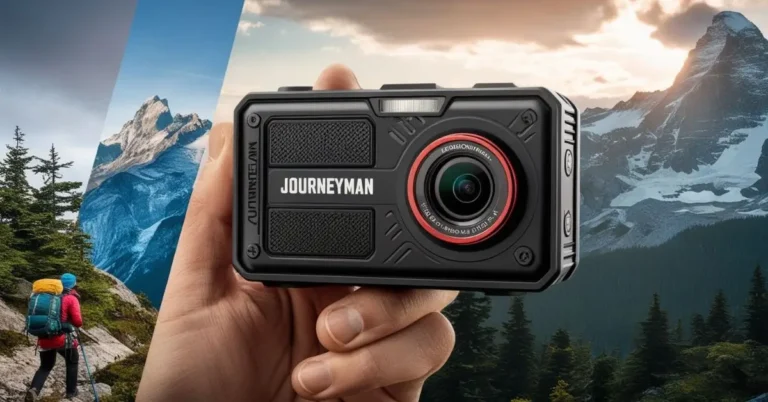In the world of filmmaking, the term journeyman often refers to a skilled professional who may not always be in the spotlight but whose work is essential to the craft. Similarly, a “journeyman camera“—whether a specific model or a metaphorical concept—represents the reliable, versatile tools that have shaped cinema without always receiving the fame of high-end cameras like the ARRI Alexa or RED Epic.
This article explores the idea of the journeyman camera, examining its role in film history, its technical evolution, and its impact on both independent and mainstream productions. From early 16mm workhorses to modern digital stalwarts, these cameras have democratized filmmaking, allowing storytellers to create without exorbitant budgets.
Chapter 1: Defining the Journeyman Camera
What Makes a Camera a “Journeyman”?
A journeyman camera is not defined by prestige but by:
- Affordability – It’s accessible to indie filmmakers and documentarians.
- Durability – It withstands tough shooting conditions.
- Versatility – It adapts to various genres (documentary, narrative, experimental).
- Ease of Use – It doesn’t require a massive crew to operate.
Unlike high-end cameras that dominate Hollywood, journeyman cameras often fly under the radar but are responsible for some of cinema’s most iconic moments.
Historical Examples
- Bolex H16 – The 16mm Swiss-made camera used by experimental filmmakers like Stan Brakhage.
- Éclair NPR – A lightweight 16mm camera favored by vérité documentarians in the 1960s.
- Canon Scoopic – A rugged 16mm camera used in newsreels and guerrilla filmmaking.
These cameras didn’t have the glamour of 35mm Panavision rigs, but they were the backbone of grassroots filmmaking.
Chapter 2: The Evolution of the Journeyman Camera
The Film Era (1960s–1990s)
Before digital, journeyman cameras were often 16mm or Super 16mm, offering a balance between cost and quality.
- Arriflex 16SR – A modular 16mm camera used in indie films and TV.
- Aaton XTR – A quiet Super 16 camera ideal for documentaries.
Filmmakers like Spike Lee (She’s Gotta Have It) and John Cassavetes (Shadows) used these cameras to craft raw, intimate stories.
The Digital Revolution (2000s–Present)
With the rise of digital, new journeyman cameras emerged:
- Panasonic DVX100 – The first 24p miniDV camera, revolutionizing indie film.
- Canon 5D Mark II – The DSLR that birthed the “DSLR filmmaking” movement.
- Blackmagic Pocket Cinema Camera – A budget-friendly 4K RAW option.
These cameras allowed filmmakers to shoot high-quality footage without Hollywood budgets, leading to breakout films like Tangerine (shot on an iPhone) and Upstream Color (shot on a modified Panasonic GH2).
Chapter 3: The Impact of Journeyman Cameras on Cinema
Democratizing Filmmaking
- Lower Budgets = More Voices – Films like The Blair Witch Project (shot on Hi8 and 16mm) proved that compelling stories don’t need expensive gear.
- Documentary Realism – The vérité style of the Maysles brothers (Grey Gardens) relied on lightweight, unobtrusive cameras.
Influencing Visual Aesthetics
- Grain & Imperfection – The “lo-fi” look of 16mm and early digital became an artistic choice (e.g., The Florida Project).
- Handheld Authenticity – Cameras like the Aaton A-Minima enabled intimate, shaky cinematography that defined 2000s indies.
Chapter 4: Modern Journeyman Cameras
Current Contenders
- Sony FX3 – A compact full-frame camera used in indie features and docs.
- Z CAM E2 – A modular cinema camera for budget-conscious shooters.
- iPhone (with Filmic Pro) – The ultimate guerrilla filmmaking tool.
The Future: AI & Computational Cinematography
New tools like AI autofocus, real-time grading, and smartphone RAW recording are pushing journeyman cameras further, making professional filmmaking even more accessible.
Conclusion:
Why the Journeyman Camera Matters
The journeyman camera is more than just a tool—it’s a symbol of resourcefulness and creativity. From the Bolex to the Blackmagic, these cameras have enabled filmmakers to tell stories that might otherwise never have been seen. In an era where technology constantly evolves, the spirit of the journeyman camera lives on: it’s not about the gear, but the vision behind it.
Final Thoughts
Whether you’re a budding filmmaker or a seasoned pro, the lesson is clear: great cinema isn’t made by the most expensive camera, but by the most determined storyteller. The journeyman camera is proof that limitations can breed innovation—and that the next cinematic masterpiece could be shot on whatever camera you have right now.











